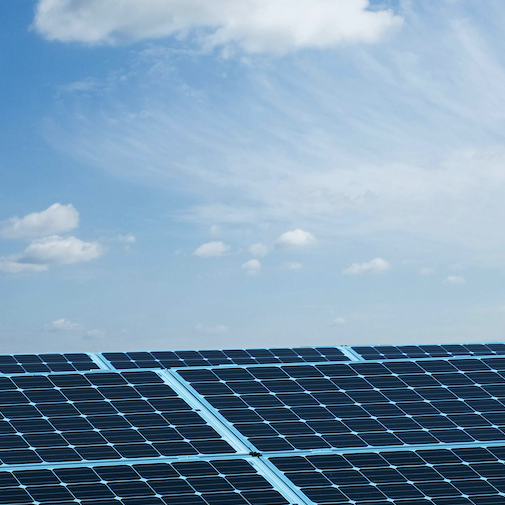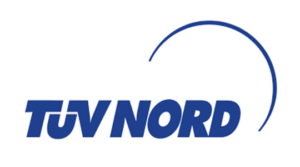Informations about the GreenTrade Projects

REMOVAL- / AVOIDANCE PROJECTS
Efforts to reduce carbon emissions fall into two main categories: projects aimed at removing carbon from the atmosphere and those focused on preventing the generation of carbon emissions. Both types, if certified, can yield carbon credits and are crucial in the fight against climate change. It's important not to favor one over the other, as they are equally necessary for achieving a net-zero future. In our portfolio, we offer both removal and avoidance projects that undergo rigorous evaluation by our team of experts through a thorough verification process.
This ensures that only the highest-quality projects make it into our selection. Our unique approach not only maximizes positive environmental and social impacts but also provides risk mitigation supported by top-notch financial expertise. We assist our clients in measuring and reducing their carbon footprint, establishing strong partnerships with project carriers involved in initiatives recognized by the Voluntary Carbon Market. This allows us to provide our clients with portfolios comprising certified carbon reduction projects of the highest caliber, enabling them to decarbonize beyond their own operations.
GREENTRADE FOCUS
Removal Carbon Projects
Carbon removals are activities that remove and durably store carbon dioxide from the atmosphere. There are several ways of doing this, including:
Permanent storage (carbon is captured directly in the air and stored in a stable form)
Carbon farming, meaning activities that increase carbon capture in soils and forests (for example forest restoration, peatland and wetland management)
Carbon storage in products (for example carbon captured by trees is stored in wood-based constructions)

Specialized technology extracting carbon from the atmosphere, such as Direct Air Capture (carbon is being removed from the atmosphere through chemical processes). For more effectiveness, carbon needs to be intercepted directly where it is released, often nearby industrial sites. You might also have heard of Carbon Capture Utilization and Storage (CCUS), which refers to the process of capturing CO2 and either storing it permanently or converting it into valuable products (such as methanol).
Enhancing the capacity of a forest to pull carbon out of the atmosphere through photosynthesis by preserving existing carbon sinks and creating new ones: reforestation and afforestation. Mangroves also have high carbon absorption capacities. Other projects include agricultural projects.

GREENTRADE PREVENTION
Avoidance Carbon Projects
Many human actions contribute significantly to carbon emissions, with industrial burning of fossil fuels and the depletion of natural carbon sinks like forests being particularly impactful. Carbon avoidance projects focus on mitigating these emissions by addressing these activities directly, either by capturing the emissions they produce or by preventing the activities altogether.
In the case of burning fossil fuels, the most efficient method to capture emissions involves intercepting them at the source, such as industrial facilities with high carbon emissions. Avoidance projects thus capture these emissions on-site, store them, and sometimes repurpose them by converting the gases into new and beneficial materials.
For example: renewable energy. Contributing to decarbonizing the local power grid through renewable power infrastructure and thus prevent GHG emissions released into the atmosphere.
For example: Forestry and land use. These projects involve activities such as forest management planning, timber production, agroforestry practices, and land-use optimization.
VAlIDATION
GreenTrade Quality




Criteria
Carbon offset projects are a key instrument in reaching carbon neutrality.
High-quality projects are certified by an international standard to ensure a quality baseline.
For example, the VCS Program developed by Verra is the most widely adopted carbon credit certification program. This program allows certified offset projects to turn their emission reductions or removals into carbon credits.
Additionality
Reductions are considered additional if they wouldn’t have taken place without the existence of a market for offset credits. If the reductions would have occurred regardless, without any opportunity for project owners to sell carbon offset credits, then they aren’t deemed additional. This concept of additionality is crucial for ensuring the credibility of carbon offset credits. If the greenhouse gas reductions associated with these credits aren’t genuinely additional, opting to purchase offset credits instead of reducing your own emissions could actually exacerbate climate change.
Permanence
One challenge with using carbon offsets to balance out CO2 emissions is that CO2 effects last a long time. Most of the carbon emitted today will eventually leave the atmosphere, but about 25% stays there for hundreds to thousands of years. To make up for this, offset credits need to be linked to greenhouse gas reductions that are just as lasting. If a greenhouse gas reduction is reversed, meaning greenhouse gases are emitted afterward, cancelling out the reduction, it no longer helps compensate for emissions.
Quantification
Most significant carbon offset programs have set guidelines, also known as protocols or methodologies, for measuring emission reductions and removals from projects. These protocols offer standardized approaches for calculating baseline emissions and assessing a project’s actual emissions. Overall, these protocols are trustworthy tools for accurately quantifying a project’s emission reductions.
Sustainability
Carbon offset programs implement regulations and processes to prevent the approval of projects that might lead to social, economic, or environmental damage. Furthermore, certain programs and independent certifiers offer additional certifications to acknowledge the social and environmental advantages generated by offset projects. Buyers can typically trust these regulations and certifications when assessing potential offset credit acquisitions, especially in identifying projects with favorable co-benefits.
Facts & Elements
Due diligence on offset projects will inevitably contain elements of subjectivity. Offset credit buyers should pay special attention to areas of greatest concern and make a determination about whether or not to buy credits based on their own comfort levels and risk tolerance, taking into account all elements of a project’s “quality.” Particular attention, however, should be focused on additionality and quantification questions.
Owner & Partners
Carbon offset programs typically aim to regulate conflicting claims by requiring project owners to legally declare their exclusive entitlement to credited reductions. However, in numerous instances, pinpointing the exact location of indirect reductions can be challenging or even impossible, making it hard to validate such declarations. From a due diligence standpoint, the critical question revolves around whether the owners of the indirect emission sources are likely to assert any reductions.
MARKETPLACE
Why invest through GreenTrade?
Access to impactful and trustworthy climate projects is limited, primarily because of the absence of regulation, independent quality evaluation, and continuous external monitoring and verification of project advancement. Moreover, project owners hesitate to engage with corporate investors due to past instances of greenwashing and neglecting genuine project requirements, as well as conflicting interests.
To address this challenge, GreenTrade constructs a portfolio of top-notch projects that align with the requirements of both project owners and investors. Simultaneously, we prioritize integrity, ensuring rigorous evaluation and ongoing education for stakeholders regarding decarbonization and compensation claims.
Join our Wailist
Get in touch with us and receive frequent updates about new projects and the launch of our carbon marketplace platform.


